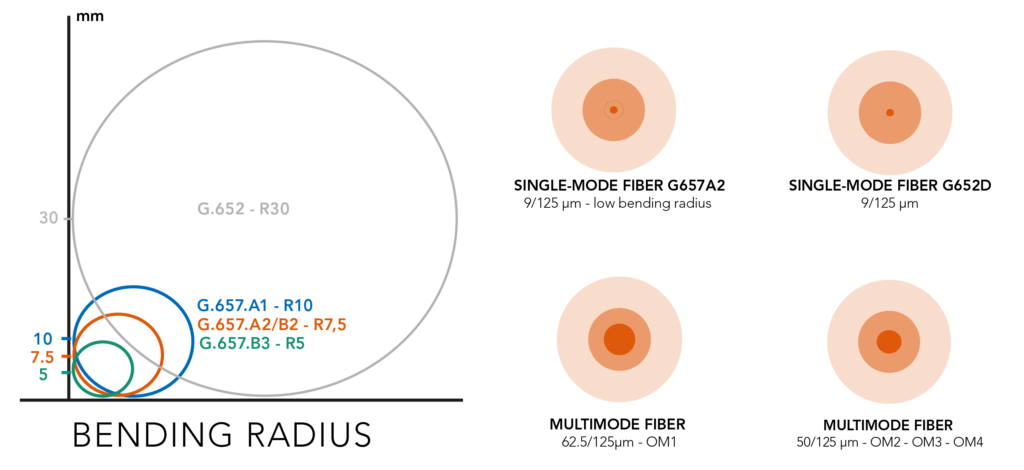How to choose your optical fiber cable?
It is crucial to carefully choose your optical fiber cable to ensure optimal performance on your network. Do not leave it to chance, as each selection step plays an essential role in the quality and reliability of your optical fiber infrastructure.
Here is a detailed overview of the five steps to follow when choosing your cable:
Step 1: optical fiber cable structure
The cable structure determines its design and ease of installation. You have the choice between different structures:
- Breakout: This type of cable features individual strands of 2 mm, making it ideal for applications requiring direct connections.
- Distribution: The strands are grouped within a 900 µm jacket, facilitating splicing or connection to connectors.
- Loose Tube: Strands are grouped within a 250 µm loose tube, offering good protection and increased flexibility during splicing.
- Micro-module: This cable type is designed for quick and easy installation, with mass splicing for large-scale deployments.

Step 2: number of optical fibers
The number of optical fibers depends on the specific needs of your network. You can choose cables with a number of fibers ranging from 1 to 288, depending on the capacity required for your application.

Step 3: type of optical fibers
The choice of optical fiber type depends on the transmission distance and desired performance. Options include:
- Single-mode Fiber G652D: Suitable for long distances, with dimensions of 9/125 µm.
- Single-mode Fiber G657A2: Ideal for installations with low bend radius, with the same dimensions as G652D.
- Multimode Fiber: Available in various dimensions, such as 62.5/125 µm for OM1 and 50/125 µm for OM2, OM3, and OM4, suitable for short distances and high-speed applications.

Step 4: installation location of the optical fiber cable
The installation location influences the choice of cable sheath:
- Outdoor: Choose a black HDPE sheath for maximum resistance to outdoor conditions.
- Indoor: Prefer a flexible LSZH sheath of color, fire-resistant, and environmentally friendly for indoor use.
- Indoor and outdoor: Opt for a black LSZH sheath for protection against fire and outdoor environment.
Step 5: protection of optical fibers
Cable protection is essential to ensure its durability and resistance to damage. You have a choice of various protection options:
- Glass yarns / aramid: Provide basic protection.
- Glass fiber braid: Ensures excellent protection while maintaining the dielectric cable structure of the cbale.
- Metallic armor: Provides optimal protection against rodents and crushing, ideal for harsh environments.

By following these five steps, you can choose the optical fiber cable perfectly suited to your needs.
👇 Order your optical fiber cable on our website 👇
For further details on optical fiber cables,
Contact us for more information; our fiber optic experts will address your needs promptly:contact@folan.net
+33 (0)4 78 800 810



